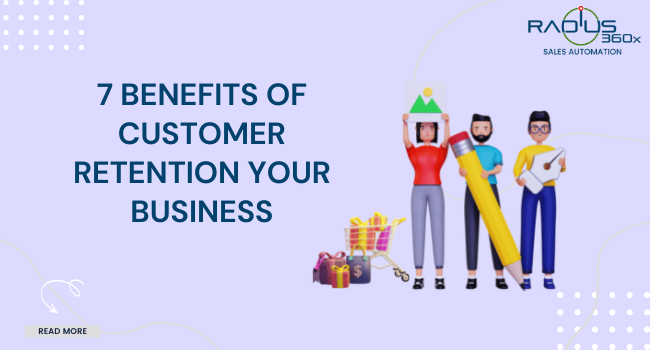
A new customer is always worthy of your acquisition resources, but are you neglecting your current customers and not focusing on retaining them? Don’t make this mistake. Retaining customers for a longer period yields more and better results over time. Customer retention is a lesser-known sales strategy but not an unprofitable one. If you are still not applying a retention strategy, you are missing out on many benefits of customer retention. The better your customer retention rate is, the more it shows that you can keep your customers over time.
It is less expensive to retain customers than to acquire new customers. For acquiring new customer one has to start from the scratch for educating the new prospects about your product, launching various marketing campaigns for brand awareness, etc. It is good to acquire new customers, that’s how business is created, but your current customer base can prove more profitable than getting new customers.
Retention is more cost-effective than acquisition. Some ways for retaining your customers are personalizing each engagement with them or allowing them to give feedback without any restrictions.
Once you have loyal customers, they will be your most significant source for bringing a recurring source of income. You can put effort and money into marketing campaigns for lead generation, but the most compelling source is referrals. People engage and get influenced by their colleagues and peers much faster as compared to a business directly.
Customers also build a sense of loyalty towards your business with regular engagement and retention strategies directed towards them. As a business it is important for you to reward your customers for being loyal to you. They tell their friends, family, business partners, and acquaintances about your company and may also give you a positive review. You will save on acquisition costs when you get new customers through referrals, as your expenses towards awareness reduces.
Getting a loyal customer base means winning the trust of your customers. It is easier for you to revise your prices when you have retained your customers. However, don’t overuse this tactic to make extra profits.
Customers will only pay more if they think you are delivering value to them. You can ask your customers if they’d like to upgrade to a better but relatively expensive version of your product or if they’d like to buy related products that can help them maximize results. The sale isn’t over after the first purchase, and you can upsell and cross-sell regularly to loyal customers.
Long-term and engaging customers give you feedback, and you can track their business growth because of your product. Your loyal customer base defines your ideal customer profile. Hence tasking there ideal feedback or suggestion will help in making desired changes in the product to cater to the larger audience in similar type.
There will be times when you can get negative feedback no matter how good your product is. Do not be upset with negative feedback; try to resolve your customers’ problems most feasibly.
Don’t lose yourself in the crowd of businesses that focus on acquisition strategies and forget that they have current relationships too that need to be nurtured and grown. Plan a retention strategy ahead of time. Customers only stay with those businesses with whom they feel a personal connection.
Additionally, retention shows that you know how to make someone keep coming back to your business and makes you stand out from your competitors. It shows that you value your customers. Your competitors might be trying to poach your customers but if you offer value to your customers, they are less likely to move and engage with your competitors. So make a retention strategy to show that your customers are essential to you.
The businesses who reach success know their customers inside out. Making a retention strategy will require extensive research on your customers. The research is used for other purposes like customer service or product development. You need to know your customers’ needs, emotions, challenges, purchasing power etc., for selling to and retaining customers.
Detailed insights about your target audience help make better and more personalized products for them. Better products and sales will eventually lead to more profit and good business.
The customer churn rate is the opposite of the customer retention rate. It refers to the rate customers stop buying from you over a given period. Now, losing customers is never good for any business and its reputation, and focusing on retention strategies will reduce customer churn rates to a great extent.
For example, If a customer stops buying from you due to bad customer service they can leave a bad online review which may harm your reputation. Therefore, it’s important to focus on retaining your customers and keeping them satisfied with your services.

The above benefits are some things that no business should miss out on. Make sure you put efforts to retain your current customers retention strategy. A business’s reputation is based on how well it can satisfy a consumer’s needs and win their loyalty. Put extra effort into your current customer relationships; which might even prove more profitable. So do your best to retain your most valuable customers.